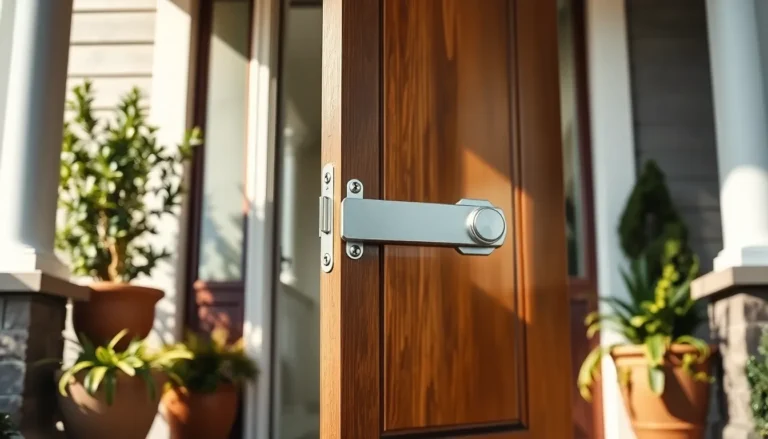Table of Contents
ToggleIn a world where security concerns are on the rise, having the right surveillance system can feel as vital as having a good coffee in the morning, or more crucial, depending on the neighborhood. Now, imagine a cellular security camera that operates without needing WiFi. Yes, that’s right. These tech marvels are here to redefine how you keep an eye on your property. If you’ve been on the fence about upgrading your security setup, keep reading. This guide will unravel everything you need to know about cellular security cameras, minus the WiFi hassle and complexity.
Understanding Cellular Security Cameras

Cellular security cameras offer a unique approach to surveillance by relying primarily on cellular networks. Unlike traditional cameras that need a WiFi connection, these devices use cellular technology to transmit video feeds, making them ideal for locations where internet connectivity is a challenge. Cellular security cameras operate on 4G LTE networks, ensuring robust communication capabilities even in remote areas.
These cameras are equipped with SIM cards, similar to smartphones. They communicate using the same towers that handle calls and texts. This feature fortifies their functionality in places without access to standard broadband. The result? A flexible, reliable security solution that doesn’t compromise on quality.
How Cellular Security Cameras Work
The operation of cellular security cameras is quite simple yet effective. These devices capture video footage via high-resolution lenses and encode it into a digital format. Once the footage is captured, it’s transmitted over the cellular network to a secure cloud service or directly to your smartphone.
Most cellular security cameras provide options for continuous or motion-triggered recording. Users receive notifications instantly on their devices if any movement is detected. Also, many models now include advanced features like HD video streaming, night vision capabilities, and two-way audio functionalities, all designed to enhance user experience and security.
Benefits of Cellular Security Cameras Without WiFi
Cellular security cameras come with a slew of benefits that make them a compelling choice for many users:
- Independence from WiFi: One of the greatest advantages is the ability to function without an internet connection. This factor makes cellular cameras suitable for rural properties or temporary installations.
- Wider Coverage: They can be installed in remote areas where traditional internet setups are impractical. Some may even work in regions with limited cellular coverage, expanding their usability.
- Easy Installation: Setting up a cellular camera typically involves just mounting the device and inserting a SIM card. No complicated wiring or network setups needed.
- Increased Reliability: Cellular networks do not face typical WiFi interferences. Brief interruptions in a home network won’t affect the camera’s performance, ensuring consistent monitoring.
- Remote Accessibility: Users have instant access to live feeds and recorded footage via mobile applications, boosting convenience for on-the-go monitoring.
Choosing the Right Cellular Security Camera
Selecting the ideal cellular security camera involves evaluating a few key factors:
- Resolution: Look for high-definition (HD) models that provide clarity in images and videos. 1080p is generally sufficient for most security needs.
- Field of View: A wide-angle lens allows you to cover more area. Check for coverage specs to ensure all critical areas are monitored.
- Battery Life: Many cellular cameras run on rechargeable batteries. Choosing models with longer battery life minimizes maintenance and human intervention.
- Mobile App Usability: Ensure the manufacturer provides a user-friendly app for live streaming and playback access.
- Cloud Storage Options: Some devices come with free cloud storage while others may require subscriptions. Assess what fits your budget and storage needs.
- Durability: If the camera is for outdoor use, it should be weatherproof and resistant to varying conditions.
Installation and Setup Process
Installing a cellular security camera is generally straightforward. Here’s a quick step-by-step guide:
- Choose the Location: Select a spot that offers a clear view of the area you wish to monitor, preferably at least nine feet off the ground to avoid tampering.
- Mount the Camera: Use screws or adhesive mounts to secure the device to your chosen surface. Most cameras come with installation kits to simplify this process.
- Insert the SIM Card: Following the manufacturer’s instructions, insert the SIM card into the camera. This step is crucial for enabling cellular connectivity.
- Power Up: Connect the camera to a power source if it requires one, or ensure the battery is fully charged.
- Download the App and Connect: Install the designated app on your smartphone, and follow the prompts to connect the camera to your account.
- Test the Setup: Once everything is in place, testing the camera is essential to ensure video feeds are functioning correctly and notifications are enabled.
Comparing Cellular Security Cameras to WiFi Cameras
When weighing cellular security cameras against their WiFi counterparts, several differences emerge:
- Connectivity: WiFi cameras rely heavily on internet availability, while cellular cameras operate independently of wired networks.
- Installation Ease: WiFi cameras often need complex setups involving routers and Ethernet cables. Conversely, cellular cameras streamline this process with simplicity.
- Network Reliability: Cellular networks tend to offer more consistent performance, particularly in environments with frequent WiFi dropouts.
- Flexibility: If a user needs a mobile or temporary installation, cellular options undoubtedly provide more versatility, such as for construction sites or events. WiFi cameras may struggle in such scenarios due to connectivity limits.
Tips for Optimizing Your Cellular Security Camera
To make the most of a cellular security camera, keep these tips in mind:
- Monitor Signal Strength: High cellular signal strength is critical for minimal latency and reliable footage. Check for areas with optimal reception before installation.
- Regularly Update Firmware: Manufacturers frequently release updates that enhance features and security. Keeping firmware current ensures smooth operation.
- Consider Subscription Services: Having a subscription plan for cloud storage can prove beneficial. This way, crucial footage is securely archived and accessible.
- Use a Solar Charger: For outdoor cameras, solar panels can extend battery life significantly by using renewable energy, minimizing the need for manual recharging.





